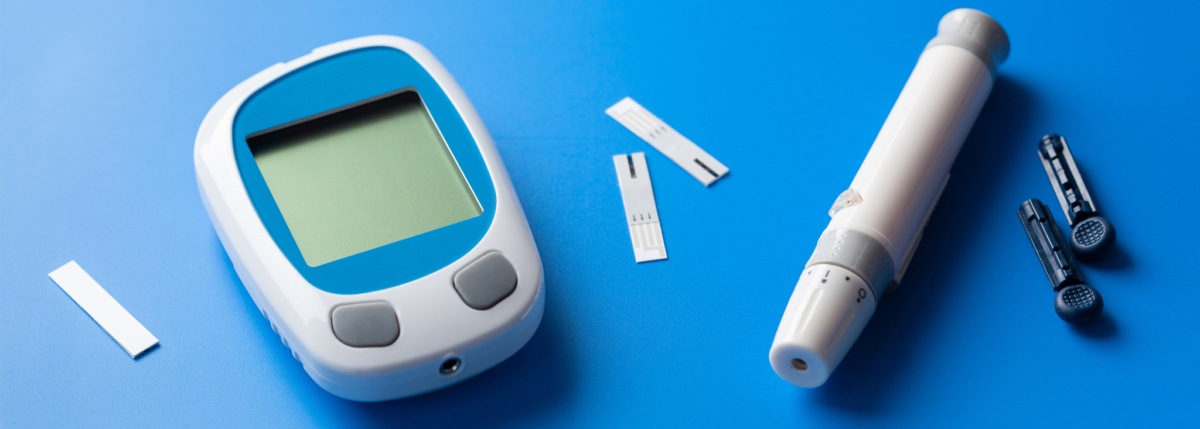Ketone Meters: What to Look For
You might be surprised to hear that ketones are a necessary part of your body’s metabolic processes—after all, any mention of “ketones” is usually accompanied by feelings of dread among people with diabetes (PWDs). Measuring ketones properly is a critical part of diabetes management when it comes to diabetic ketoacidosis (DKA). If you are unsure of when you should be checking for ketones, see this resource.
Role of ketones
Ketones are naturally produced by the liver, and low levels of ketones are normal. When insulin is scarce, the body burns fat for fuel instead of glucose. Ketones are produced as a result of this fat-burning energy process, and when they reach high levels, they are a warning sign that the body is in DKA. The condition is common in undiagnosed cases of type 1 diabetes—Studies show between 30-40 percent of people are in DKA when diagnosed with type 1 diabetes (T1D).
Measuring ketones
Ketones and low-fat diets have been making waves in the fitness world, spurring advancements in technology that make measuring ketones more efficient. Factors like diet and exercise affect the presence of ketones, and when ketones from lack of insulin are present, it results in further ketone production from exercise.
Urine testing for ketones
Urine strips, like Ketostix, use a color-coded spectrum to estimate the level of ketones excreted in the urine. They do this by measuring acetoacetic acid and acetone, some of the chemicals that indicate whether ketones are present. Measuring using these chemicals for ketone reference is the cheaper option, but it has proven to be less accurate than blood testing because not all components of ketones can be captured. Additionally, ketones take longer to show up in urine than in blood, so the measurement can be delayed.
These kinds of strips have an old-school utilitarian style and might look the most familiar for PWDs—most of us have them sitting on a bathroom shelf. Remember that ketone test strips for urinalysis have an expiration date, as well as a separate advisory to dispose of a certain period of time after opening (usually six months after opening). They will no longer be accurate at this time and should be replaced immediately. The most popular brand of test-strips for urinalysis are Ketostix, though there are several other options available online and in drugstores. It is important to note that not all brands of ketone test strips are approved by the FDA.
Generally, the ketone spectrum looks like this:
| Color (on urine strip) | Ketone Level (mg/dL) | Ketone Level (mmol/L) | Estimate | Range |
 |
0
|
<0.06 | Negative | Normal |
 |
5 | 0.28 | Trace | Normal |
 |
15 | 0.55-1.0 | Small | Normal |
 |
40 | 2.2 | Moderate | Medium – Seek Medical Advice |
 |
80 | 4.4 | Large | High – Seek Medical Advice |
 |
160 | 8.9 | Large | High – Seek Medical Advice |
Blood testing for ketones
Ketone blood meters are very similar to blood glucose meters (BGMs), and added value can often be found here as some brands function as both a BGM and ketone meter! These can be purchased at retail pharmacies. One benefit of using a blood meter to measure ketones is that it can be difficult to produce urine when the body is dehydrated—a finger stick yields a drop that can provide more accurate drawing from another ketone chemical. Testing your blood for ketones is also more accurate because, as mentioned above, the presence of ketones in urine is delayed.
Many ketone blood meters measure the amount of beta-hydroxybutyric acid (BHA) in the blood. Along with insulin, BHA is used to convert ketones into energy.
Blood meter rundown
Note—These are a sample of some of the blood ketone meters currently available, not all of them.
| Product | Features | Availability |
| Abbot Precision Xtra Blood Glucose & Ketone Monitoring System
|
|
USA |
| FORA6Connect Blood Ketone Starter Testing Kit
|
|
USA |
| Freestyle Optium Meter* + Freestyle Optium Beta Ketone Test Strips
(*Freestyle Libre System users in the US, UK and Australia can also check for ketones using the reader’s built-in meter) |
|
UK, Australia |
REFERENCES►
This piece is part of Beyond Type 1’s resources on DKA + managing ketones—find the complete collection of resources here.
This article was verified for accuracy by Julia Blanchette PhD(c), RN, CDE.





